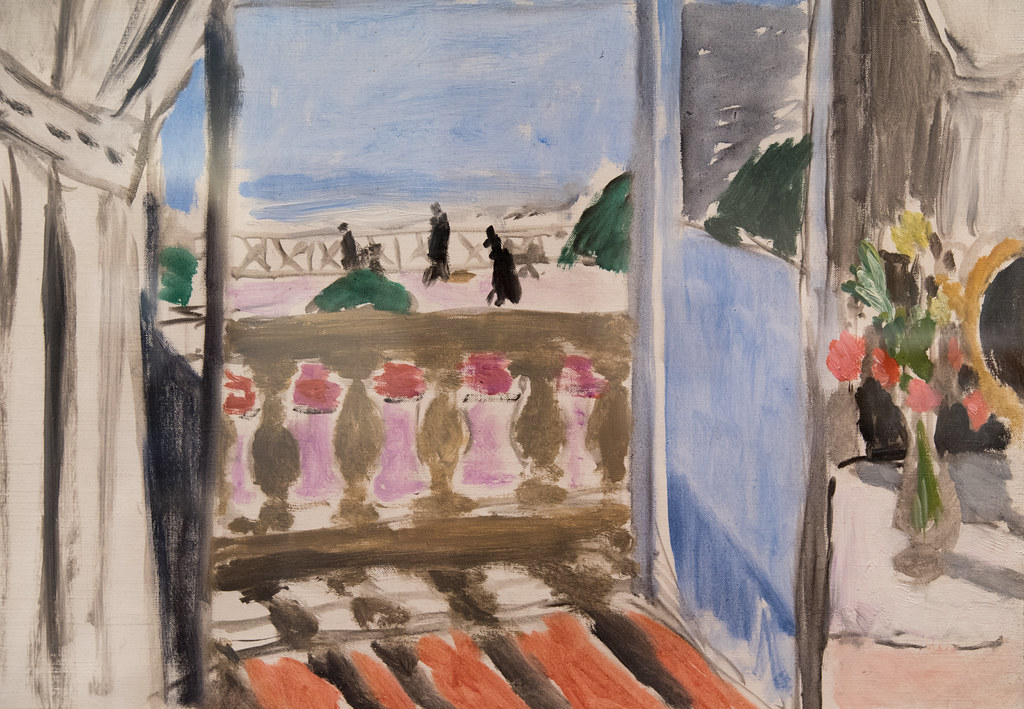

Beginning with the early works created around 1900, it will move on to the revolutionary paintings of Fauvism and the experimental works of the 1910s, the sensual paintings of the Nice period and the 1930s, before culminating in the legendary cut-outs of the 1940s and 1950s.
La fenetre ouverte matisse full#
The exhibition will span the full range of the artist’s career. Following Baudelaire’s poem, the exhibition at the Fondation Beyeler is thus conceived as a journey through Matisse’s work and life, in which travel played an important part. Its poetic leitmotifs of luxury, peace and pleasure («luxe, calme et volupté») are guiding principles of Matisse’s work and capture the very essence of his artistic output. The exhibition takes as its starting point Charles Baudelaire’s poem Invitation to the Voyage (1857), which Matisse repeatedly referred to. Matisse was also an innovator in the realm of sculpture, and in his late cut-outs he devised a distinctive interplay of painting, drawing and sculpture. In freeing colour from the motif and simplifying forms, he redefined painting and imbued art with a hitherto unknown lightness. His ground-breaking work has profoundly influenced generations of artists, from his contemporaries up to the present day. Henri Matisse (1869–1954) ranks among the most famous exponents of modern art. The latest in a long line of unparalleled exhibitions such as «Paul Gauguin» (2015), «Monet» (2017) and «The Young Picasso – Blue and Rose Periods» (2019), «Matisse» will be on view at the Fondation Beyeler from 22 September 2024 to 26 January 2025. Many motifs and key themes of Matisse’s work echo those found in Baudelaire’s poem.

It will take as its starting point Charles Baudelaire’s poem « Invitation to the Voyage» (1857). Featuring around 80 works from major European and American museums and private collections, the exhibition will highlight the development and diversity of the artist’s groundbreaking oeuvre. 1) Henri Matisse, La fenêtre ouverte, 1905.In autumn 2024, the Fondation Beyeler in Riehen/Basel will hold the first Henri Matisse retrospective in Switzerland and the German-speaking world in almost 20 years. The half-open shutters protect the interior from the invasion of the outside world, but at the same time allow limited contact with it. The atmosphere of indolence and nostalgia is enhanced by the emptiness of the foreground and the deep perspective created by the pattern of light and shadow on the floor. Here, the mood created by the play of light on the panes and frame of the window becomes the main subject of the picture. 26).Īs John Elderfield has discussed of the present work: cat., National Gallery of Art, Washington. Cowart, Henri Matisse, The Early Years in Nice, 1916-1930, exh. Matisse would artistically enlarge this hotel, its presence, its rooms, and the views well beyond their literal dimensions he would push his art and the rhythms of its surfaces to record his new levels of excited observation" (J. As Jack Cowart has noted, "The rooms were decorated in nineteenth-century Italianate styles. Drawn in his room at the Hôtel Méditeranée in Nice, this studio was an expansive and fertile ground for Matisse's artistic explorations. In the present work, he returns to what had become a favorite subject an interior, brightly lit and seen through half-open shutters.

Matisse experimented with the theme of the open window as early as 1905, when he painted La fenêtre ouverte (fig.


 0 kommentar(er)
0 kommentar(er)
